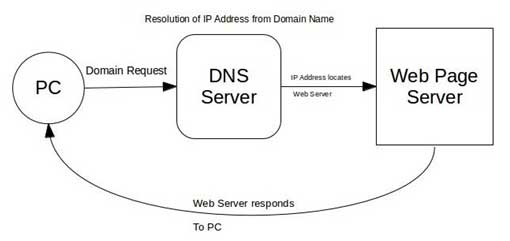Perhaps the ground breaking discovery made in the past three decades is the World Wide Web (WWW) and Internet. The WWW has changed the life of most people. All the daily mundane tasks like railway ticket reservation, movie ticket reservation, news paper reading, watching television and many other things are being done through Internet and WWW.
Like every coin has two sides, as there is good, there is also bad. The advantages (good) of the Internet outweigh the disadvantages (bad). Information sharing has become so simple that you can send information to another person on the other side of the globe within a few minutes. The information in the web is stored in web pages.
Internet
The Internet is a huge collection of computers across the world connected through a communications network. Generally each computer in the Internet will not be connected to every other computer physically.
Computers in an organization will be connected to one another known as a Local Area Network (LAN) and one of the computers in the LAN will be connected to the outside world. So, Internet can also be described as a network of networks.
The interface between various computers in the Internet for communicating with one another is a low level protocol known as the TCP/IP. In order to communicate with one another each device in the Internet should be assigned an address which is known as the IP address.
Widely used IP address format is the IPv4 which contains 32 bits. An IP address contains 4 octets. For example 192.168.220.15 is an IP address. As the available IP addresses are very less, a new standard known as IPv6 has been approved in 1998 which contains 128 bits.
As it is quite difficult to remember the numerical IP addresses, they are converted to names using the DNS (Domain Name System), which are easy to remember. Names and IP addresses are analogous to variable names and memory addresses in programming.
As the IP addresses are by the Internet internally, there should be some mechanism for converting a name (domain name) to its corresponding IP address. This is done by a software system known as the name server which implements the DNS. Below figure illustrates the abstract representation how a request is handled in the Internet.
By mid 1980’s many high-level protocols like telnet, ftp (file transfer protocol), Usenet (bulletin board), mailto (mail transfer) and others were developed. So, in order to gain all the advantages of the Internet, a user should learn all interfaces related to the protocols mentioned before.
By late 1990, a new better approach came into existence which is known as the World Wide Web (WWW) for using the Internet effectively.

Suryateja Pericherla, at present is a Research Scholar (full-time Ph.D.) in the Dept. of Computer Science & Systems Engineering at Andhra University, Visakhapatnam. Previously worked as an Associate Professor in the Dept. of CSE at Vishnu Institute of Technology, India.
He has 11+ years of teaching experience and is an individual researcher whose research interests are Cloud Computing, Internet of Things, Computer Security, Network Security and Blockchain.
He is a member of professional societies like IEEE, ACM, CSI and ISCA. He published several research papers which are indexed by SCIE, WoS, Scopus, Springer and others.

Leave a Reply